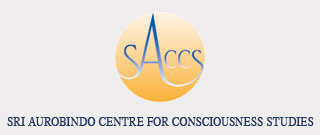WRITINGS BY THE MOTHER
© Sri Aurobindo Ashram Trust
The psychic being
Sweet Mother,
What exactly is the soul or psychic being? And what is meant by the evolution of the psychic being? What is its relation to the Supreme?
The soul and the psychic being are not exactly the same thing, although their essence is the same.
The soul is the divine spark that dwells at the centre of each being; it is identical with its Divine Origin; it is the divine in man.
The psychic being is formed progressively around this divine centre, the soul, in the course of its innumerable lives in the [new p. 246]terrestrial evolution, until the time comes when the psychic being, fully formed and wholly awakened, becomes the conscious sheath of the soul around which it is formed.
And thus identified with the Divine, it becomes His perfect instrument in the world.
16 July 1960
*
Sweet Mother,
You have said that once we have found our psychic being, we can never lose it. Isn't that so? But can we come into contact with it from time to time when we are receptive?
When you have established contact with your psychic being, it is, in effect, definitive.
But before this contact is established, you can, in certain circumstances, consciously receive the psychic influence which always produces an illumination in the being and has more or less lasting effects.
16 July 1960
*
Sweet Mother,
The soul individualises itself and progressively transforms itself into a psychic being. What are the best conditions for its rapid growth?
It would be more correct to say that the soul puts on a progressive individual form which becomes the psychic being. For since the soul is itself a portion of the Supreme, it is immutable and eternal. The psychic being is progressive and immortal.
All the methods of self-knowledge, self-control and self-mastery are good. You have to choose the one that comes to you spontaneously and best corresponds to your nature. And once [new p. 247]having chosen the method, you must use your intelligent will to apply it with an unfailing perseverance that does not shrink from any obstacle, any difficulty. It is a long and minute work which must be undertaken with sincerity and continued with an increasing sincerity ever more scrupulous and integral.
The easy paths generally lead nowhere.
28 July 1960
*
Sweet Mother,
Does an outer life of evil deeds and a base consciousness have an effect on the psychic being? Is there a possibility of its degradation?
A base and evil life can only have the effect of separating the outer being more and more completely from the psychic being, which retires into the depths of the higher consciousness and sometimes even cuts off all relation with the body, which is then usually possessed by an asuric or rakshasic being.
The psychic being itself is above all possibility of degradation.
28 July 1960
*
Sweet Mother,
How does the soul influence a being who is normally unconscious?
The soul's influence is a kind of radiance that penetrates through the most opaque substances and acts even in the unconsciousness.
But then its action is slow and takes a very long time to obtain a perceptible result.
31 July 1960
*
Sweet Mother,
Sri Aurobindo says that the voice of the ordinary conscience is not the voice of the soul. What is it then?
The voice of the ordinary conscience is an ethical voice, a moral voice which distinguishes between good and evil, encourages us to do good and forbids us to do evil. This voice is very useful in ordinary life, until one is able to become conscious of [old p. 250]one's psychic being and allow oneself to be entirely guided by it--in other words, to rise above ordinary humanity, free oneself from all egoism and become a conscious instrument of the Divine Will. The soul itself, being a portion of the Divine, is above all moral and ethical notions; it bathes in the Divine Light and manifests it, but it can truly govern the whole being only when the ego has been dissolved.
12 August 1960
Collected Works of The Mother, First Edition, Volume 16, pp. 247-250

